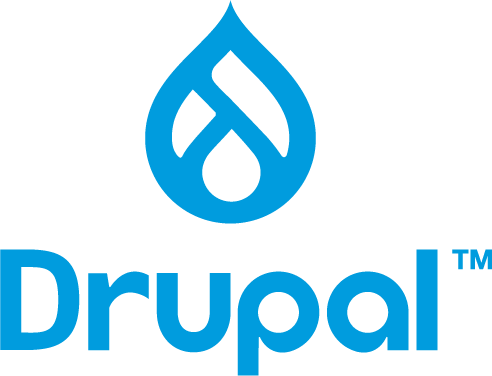
Drupal is a popular choice for government institutions and security-conscious users. It is the third most popular self-hosted (as of 2021), meaning you install it on your own web server, PHP-based content management system (CMS) and built for experienced developers. This isn’t to say casual users can’t host a website with Drupal, but advanced users are most likely to get the most out of customization capabilities because of the in-depth core features.
Two highly notable features:
Drupal’s taxonomy system for organizing content is highly customizable and follows best development practices to better handle huge amounts of pages. This strict standard ensures that having a large amount of third party modules installed is less likely to cause unexpected problems.
Native support for multiple languages negates the need to research third party integrations that offer a stable method for selecting default and additional languages. Therefore, it’s easier for business owners serving multiple demographic regions to offer a stable user experience (UX) for multilingual customers.
About Drupal
Drupal is an open-source CMS supported by an active and diverse community of over 600,000 people from around the world. As mentioned above, it is targeted towards developers wanting to build a highly customized website with hardened PHP and MySQL/MariaDB database security.
Claims about Drupal not being the most “user friendly” generally result from one or more of the following:
- Powerful, native, graphical user interface (GUI) functions such as WYSIWYG and drag-and-drop aren’t included for achieving complex tasks
- Deep knowledge of coding in PHP, MySQL, JavaScript, and Python are needed for deep customization
- Without strong command-line interface (CLI) skills, a lot of modules would be needed to achieve goals requiring high customization
- For situations deemed time-sensitive or where some type of industry compliance is essential (e.g. PCI and Section 508 accessibility), the best solution may be to hire a developer
All of these basically boil down to the back-end design not being tailored to novices in web design and development.
Installing Drupal
The first step in getting started with Drupal is to install the CMS on a web server, or local development environment with PHP and MySQL up to date. There are three easy ways to install Drupal:
Softaculous Instant Installer is freely available with our Shared Hosting plans and available for purchase on cPanel-Managed VPS and Dedicated Server hosting. Installing Drupal with a username, password, and domain name from Softaculous takes less than a minute.
Fantastico is no longer offered by InMotion Hosting but may be available elsewhere.
Manual installation, the DIY method, doesn’t require additional software. However, you will need to know some basic server management tasks such as how to create a MySQL database, upload files to a remote server using FTP, SCP, or cPanel.
Ignite your online presence with cutting-edge Drupal Website Hosting. Elevate speed, security, and reliability for a seamless website experience.
Using Drupal
We have many Drupal tutorials available in our Support Center. Below are some notable articles that we recommend for getting started in Drupal:
- Logging into the Drupal admin dashboard
- Resetting user passwords
- Enabling maintenance mode while you build your new website
- Updating Drupal Manually
- Installing Drupal modules for additional functionality
- Installing Drupal themes for an unique presence
- Creating a Drupal blog
- Creating a contact form for user inquiries
- Optimizing Drupal performance before modifying server settings (NGINX, PHP-FPM, etc.)
- Drupal backups for disaster recovery against cyber attacks
- Drush for managing websites via Secure Shell (SSH)
- Content-Security-Policy (CSP) HTTP header to prevent cross-site scripting (XSS) and related code injection attacks
Further Drupal Documentation
Official Drupal documentation provides a lot of documentation for using the web application, including the Drupal Cookbook for beginners. Or, learn more from our Drupal Education Channel.
